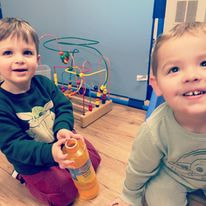 Applied Behavior Analysis (ABA) therapy is an extensively recognized and functional treatment method for youngsters with autism range problem (ASD). However, several youngsters diagnosed with ASD also present with comorbid conditions, which can make complex therapy plans and affect outcomes. Comorbid conditions can include anxiety conditions, attention deficit disorder (ADHD), sensory handling disorder, and finding out specials needs, to name a few. Specialists, moms and dads, and caretakers must adapt ABA methods to attend to the one-of-a-kind needs of these children, making certain an all natural technique to their development and well-being.
Applied Behavior Analysis (ABA) therapy is an extensively recognized and functional treatment method for youngsters with autism range problem (ASD). However, several youngsters diagnosed with ASD also present with comorbid conditions, which can make complex therapy plans and affect outcomes. Comorbid conditions can include anxiety conditions, attention deficit disorder (ADHD), sensory handling disorder, and finding out specials needs, to name a few. Specialists, moms and dads, and caretakers must adapt ABA methods to attend to the one-of-a-kind needs of these children, making certain an all natural technique to their development and well-being.
Recognizing Comorbidity in Children
Before diving into the adaptations required for ABA treatment, it is important to understand what comorbidity indicates in the context of kids with ASD. Comorbidity describes several added conditions co-occurring with a key condition. For instance, a child with ASD may also encounter difficulties associated with stress and anxiety, which can substantially influence their social communications, discovering, and overall emotional state. Acknowledging these extra difficulties is critical for tailoring treatments that cause significant improvements in habits and functioning.
The Significance of Individualized Assessment
A useful method to adapting ABA treatment for youngsters with comorbid conditions begins with an extensive analysis. By comprehensively recognizing the kid’s staminas and challenges, therapists can create an individualized therapy strategy that resolves primary and comorbid problems.
Working together with a Multidisciplinary Team
When addressing comorbidity, involving a multidisciplinary team in creating an ABA therapy strategy is vital. This team might consist of psycho therapists, speech and language therapists, physical therapists, and educational professionals who can supply insights right into the youngster’s advancement. Partnership makes sure that all variables influencing the kid’s actions are taken into consideration, leading the way for a combined and systematic approach.
Tailoring ABA Techniques for Comorbid Issues
Once a thorough evaluation has been completed and a multidisciplinary team is involved, the following action is to adapt ABA techniques to fit the particular demands of youngsters with comorbid problems. The emphasis must be on versatility in using ABA principles, enabling professionals to modify treatments based on each child’s distinct account. For instance, for a kid with both ASD and anxiety, incorporating relaxation strategies and gradual direct exposure to anxiety-inducing situations can help reduce stress and promote discovering. Moreover, visual aids and social tales can benefit kids having a hard time with communication or understanding social signs.
Keeping An Eye On Development and Adjusting Interventions
Regular surveillance of the kid’s progress is important for reliable ABA treatment, especially for those with co-occurring conditions. This includes monitoring behavioral modifications, emotional wellness, and the effectiveness of specific interventions. Progression data need to be accumulated methodically and examined regularly with the multidisciplinary team. Depending on the kid’s reaction, the therapy technique may require to be customized. to certain strategies, making certain that the interventions continue to be pertinent and efficient with time. Continuous assessment enables for incorporating new strategies or strategies as the kid’s needs develop, ultimately promoting much better end results in their general development.
Adapting ABA Methods for Comorbid Conditions
Modifying Objectives and Purposes
When adopting ABA treatment, it is vital to change the goals and purposes to show the child’s distinct requirements. For youngsters with comorbid conditions, the goals must concentrate on reducing tough behaviors and improving abilities that those comorbidities might influence. For example, if a youngster has problem with stress and anxiety, goals may consist of mentor coping techniques or relaxation methods together with social abilities training.
Incorporating Sensory Breaks and Methods
Numerous children with ASD experience sensory handling troubles, which can increase their reactions to stress and anxiety and stress and anxiety. By supplying these breaks, therapists can aid kids control their sensory requirements, enhancing their focus and engagement throughout therapy.
Utilizing Visual Supports
Aesthetic assistances play a vital duty in ABA therapy, specifically for youngsters with ASD, that may additionally have coming with interaction difficulties. Specialists can improve understanding and advertise communication by using aesthetic timetables, social tales, and hints. For youngsters with anxiousness and ADHD, aesthetic support can aid reduce uncertainty and give clear assumptions, leading to a more organized and encouraging setting.
Applying Social Abilities Educating
Children with comorbid conditions commonly encounter added obstacles in social interactions. Training should include scenarios relevant to the child’s day-to-day experiences, allowing them to move skills found out in therapy to real-world scenarios.
Promoting Psychological Law
Psychological control is essential for youngsters with ASD, particularly when they likewise experience anxiety or mood conditions. ABA professionals should concentrate on teaching psychological policy approaches throughout the therapy procedure. Methods can include determining feelings, creating coping mechanisms, and making use of mindfulness. Integrating these methods can help kids better browse their sensations, causing enhanced behavioral outcomes.
Involving in Moms And Dad Training and Participation
Training parents in carrying out ABA strategies at home urges uniformity and assistance throughout different settings. Collaborating with parents also fosters a trusting partnership, boosting the overall efficiency of the therapy.
Keeping Track Of Progression and Making Adjustments
It is crucial to continually keep track of the kid’s development and make necessary changes to the therapy strategy. Normal data collection and analysis permit specialists to review the efficiency of the treatments and change objectives as required. This iterative process makes sure that treatment continues to be aligned with the child’s developing requirements, leading the way for sustained success.
Conclusion
Adjusting Relocate Up ABA for kids with comorbid conditions needs a proactive and individualized approach. By recognizing the complexities of comorbidity, including a multidisciplinary team, and implementing tailored techniques, experts can offer effective treatments that sustain the holistic growth of these youngsters. Devoted cooperation in between specialists, parents, and educators is vital in fostering a helpful environment where kids can flourish. Ultimately, the goal of ABA therapy need to be to boost the lifestyle for youngsters with ASD and their families, permitting them to browse the obstacles associated with comorbid conditions with self-confidence and durability.
Applied Behavior Analysis (ABA) treatment is an extensively identified and useful treatment strategy for kids with autism range disorder (ASD). A sensible approach to adapting ABA therapy for kids with comorbid problems begins with a complete assessment. As soon as a comprehensive evaluation has been finished and a multidisciplinary team is engaged, the following action is to adjust ABA methods to fit the specific requirements of kids with comorbid problems. Routine surveillance of the kid’s progression is important for reliable ABA therapy, especially for those with co-occurring problems. Inevitably, the objective of ABA therapy ought to be to enhance the quality of life for youngsters with ASD and their family members, allowing them to navigate the difficulties connected with comorbid problems with confidence and durability.




 Applied Behavior Analysis (ABA) therapy is an extensively recognized and functional treatment method for youngsters with autism range problem (ASD). However, several youngsters diagnosed with ASD also present with comorbid conditions, which can make complex therapy plans and affect outcomes. Comorbid conditions can include anxiety conditions, attention deficit disorder (ADHD), sensory handling disorder, and finding out specials needs, to name a few. Specialists, moms and dads, and caretakers must adapt ABA methods to attend to the one-of-a-kind needs of these children, making certain an all natural technique to their development and well-being.
Applied Behavior Analysis (ABA) therapy is an extensively recognized and functional treatment method for youngsters with autism range problem (ASD). However, several youngsters diagnosed with ASD also present with comorbid conditions, which can make complex therapy plans and affect outcomes. Comorbid conditions can include anxiety conditions, attention deficit disorder (ADHD), sensory handling disorder, and finding out specials needs, to name a few. Specialists, moms and dads, and caretakers must adapt ABA methods to attend to the one-of-a-kind needs of these children, making certain an all natural technique to their development and well-being. The Role of Virtual Medical Assistants in Driving Medical Care Technology
The Role of Virtual Medical Assistants in Driving Medical Care Technology